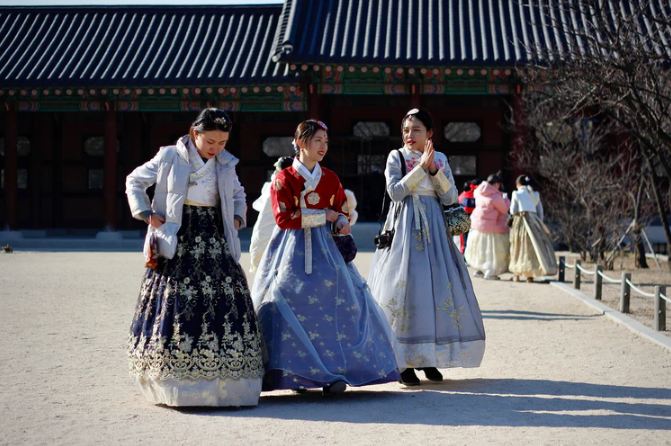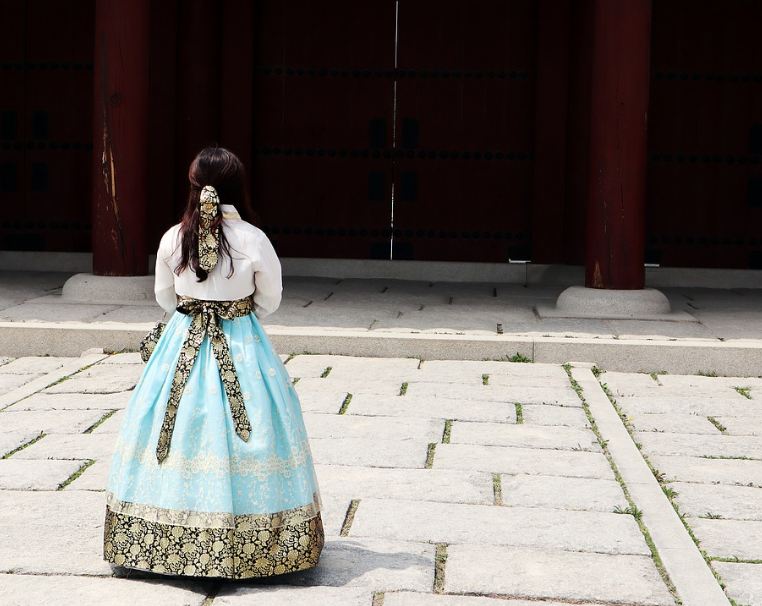When we talk about traditional fashion in Korea, it refers to the Hanbok. It is the traditional men’s and women’s clothing that can be traced back to the third century. It has a history that is as colorful as the garments themselves. Hanbok has been worn by Koreans daily until about a century ago. Up until today, it remains a vital Korean icon. It comes in different shapes and colors that represent the culture and lifestyle of people from South Korea. Locals still wear Hanbok on special occasions and holidays.
When you travel to South Korea, you can rent this timeless traditional outfit, too, which is a wonderful experience. If you want to know more, read on as we’re giving you a guide to traditional Korean fashion.
Hanbok: The Traditional Attire of South Korea
As mentioned earlier, Hanbok is the traditional clothing of men and women in Korea. Its core lies in its graceful shape and vibrant colors. It has a creative and expressive design with a slim top and full bottom. For women, its basic structure includes a jeogori or jacket and chima or skirt. For men, a hanbok includes a jacket and baji or pants. The tightly fitted jacket of a Hanbok reflects the shape of the upper body. It’s wide, flexible skirt, on the other hand, flatters the gracefulness of the wearer by hiding lower body movements. The most prominent is its unique lines, especially when the wearer is in motion. It makes it appear that the wearer is floating on air.
The design of a Hanbok creates a delicate flow of lines and angles, just like the balance in a traditional Korean house called hanok. Hanbok can be classified into a ceremonial and everyday dress. It can also be classified further based on age, gender, and season, which creates a whole lot of variety. But even though they can differ in categories, they are all the same when it comes to the basic framework. This traditional fashion is centered around the fondness of Koreans for naturalness, desire for supernatural blessings and protection, and as well as the Confucian-style dress code.
Another significant characteristic of the Hanbok is the vivid colors. They are colored using natural dyes, giving them a depth and richness, which you cannot find in artificial dyes. The colors of Hanbok also symbolized social position and as well as marital status. Commoners wore white Hanboks while the upper classes wore different colors.
Brief History of Hanbok
Hanbok was originally made to make movement easier. Its fundamental structure has its roots in the Goguryeo Kingdom from 37BC to 668BC. Through the years, its design features remained relatively unchanged.
In the early years of Hanbok, both men and women wore short pants and a waist-length jacket. Hanboks before also boasted vibrant hues that correspond to the five elements of yin and yang theory, which are white for metal, red for fire, blue for wood, black for water, and yellow for earth.
Hanbok changed gradually with the influence of different cultures like the Mongolian empire. Internal fashion changes have led to changing the traditional attire completely. Women began to wear longer skirts and shorter jackets that settled at the waist. Men, on the other hand, followed these trends and began to wear looser pants and jackets that also settled at the waist.
In the present time, Hanboks are only worn on special occasions and celebrations, such as in weddings, ancestral rites, Lunar New Year, and dol, or the first birthday of a child.
Accessories Used to Stylize a Hanbok
Here are some of the accessories used by Koreans to stylize and personalize a Hanbok:
- Binyeo: This is a hair accessory that was used as proof of marriage.
- Daenggi: This is also a hair accessory, and it was used on people who are not yet married.
- Norigae: This is an accessory that was widely available and used regardless of social status. They were hung on goreums and chimas.
What Makes a Hanbok Unique?
The Hanbok is a unique attire that truly represents traditional Korean fashion. Here are some of the things that make it unique:
It is not restrictive, allowing the wearer a graceful movement
Hanbok expresses natural physical beauty with its attractive lines and silhouette. It allows the wearer to be free and move gracefully.
It is a wearable piece of art
Hanbok is created with flat fabric in a linear shape. It only achieves its dimensionality when someone wears it. In union with a person who wears it, it comes to life to be natural, flowing, and elegant. This makes it a piece of art that you can wear, completing it with a bright smile.
It carries a deep heritage and culture behind its design
The Hanbok features straight and curved lines that represent a unique Korean aesthetic and design. Its deep hues and patterns, as well as its resemblance to nature, came from more than 2,000 years of it being worn by the Korean people.
It shows the beauty of nature
The design of Hanbok highlights the textures of the natural, hand-woven fabric and the decorations that mimic butterflies, flowers, and other elements of nature.
The Modern Hanbok
There are a lot of changes the Hanbok had gone through in the past years. And until today, it still continues to evolve. Many Korean designers have made the classic Hanbok into more comfortable and daily-wear items. You can wear them with designs that render traditional patterns and structures in simple cotton, leather, lace, and linens.
In fact, modern interpretations of the Hanbok have made their place in the fashion industry around the world. Karl Lagerfeldpresented in 2015 his Korean dynasty-inspired Chanel cruise collection in Seoul. This collection included his take on the silhouette. In 2016, Carolina Herrera paired with the South Korean government to make three custom-made Hanboks. These were shown at New York’s Museum of Arts and Design.
For some people, modernizing the Hanbok is an absolute insult to the traditional attire. But for others, the reinvented versions of the Hanbok preserve the tradition. It can match today’s fashion trends, making them look simple for daily wear.
However much the Hanbok may continue to change, it still remains an exquisite cultural heritage for its historical value and its exceptionally Korean artistic significance. With this, this traditional Korean fashionwill surely continue for many years to come.


